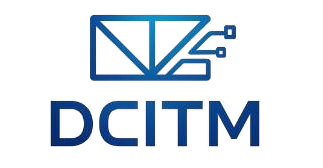Introduction
The Non-Fungible Token (NFT) sector has undergone rapid expansion, redefining ownership, art, and digital interaction. NFTs allow individuals to trade verifiable digital assets on blockchain networks, transforming industries such as entertainment, gaming, and virtual real estate. As the NFT landscape matures, Artificial Intelligence (AI) emerges as a critical enabler of growth, efficiency, and innovation. From automating creative workflows to ensuring transaction security and market predictability, AI provides the intelligence layer that the decentralized NFT ecosystem needs to thrive.
AI-Driven Creativity and Innovation
AI serves as both a tool and collaborator in NFT creation. Artists and developers can use AI-driven systems like Generative Adversarial Networks (GANs), diffusion models, and neural style transfer to generate one-of-a-kind artworks, music, and virtual experiences. This has democratized creativity, allowing even those without traditional art skills to produce high-quality digital assets.
Subpoints include:
Generative Art
AI platforms such as Runway ML, DeepArt, and Midjourney enable creators to train algorithms on specific visual datasets to generate unique NFT-ready art.
Interactive NFTs
AI allows NFTs to evolve dynamically based on real-time data inputs, such as weather, market activity, or user interactions.
AI-Driven Storytelling
In the gaming and entertainment sectors, AI can craft personalized narratives or dialogue systems embedded within NFTs, creating more immersive virtual collectibles.

Market Intelligence and Predictive Analytics
AI enhances the analytical backbone of NFT marketplaces. Machine learning algorithms can assess millions of transactions, social media trends, and sentiment data to forecast future valuations. These insights allow buyers, sellers, and investors to make evidence-based decisions, reducing the volatility of NFT markets.
Subpoints include:
Price Prediction Models
AI models assess creator reputation, rarity, and demand to determine optimal price points.
Investment Insights
Predictive analytics helps identify trending NFT categories and undervalued collections before they peak.
Data-Driven Auctions
AI can optimize bidding systems and dynamically adjust auction rules to maximize engagement and revenue.
Fraud Detection, Authentication, and Security
As the NFT industry expands, security becomes paramount. AI safeguards marketplaces by detecting abnormal trading patterns, counterfeit NFTs, and phishing activities. AI-driven content recognition systems can authenticate artwork originality and verify ownership history recorded on the blockchain.
Subpoints include:
Content Fingerprinting
Deep learning models can compare metadata and image signatures to detect replicas or copied NFTs.
Anomaly Detection
Machine learning algorithms flag suspicious wallet activities and sudden transaction spikes.
Smart Contract Auditing
AI tools can automatically review smart contract code for vulnerabilities before deployment.
Personalized Recommendations and Enhanced User Experience
AI personalizes the NFT journey by tailoring platform content to each user’s behavior, taste, and interactions. Recommendation engines powered by collaborative filtering and deep learning suggest relevant NFTs or creators, while AI chatbots offer instant assistance.
Subpoints include:
AI Recommender Systems
Curate NFT collections based on browsing and purchase history.
Conversational Support
NLP-based virtual assistants respond to queries, guide purchases, and facilitate onboarding.
Virtual Reality Integration
AI-driven avatars and agents enhance engagement in metaverse spaces through realistic interactions.
Operational Efficiency and Marketplace Optimization
AI can automate time-consuming operational processes within NFT marketplaces. From verifying transactions to moderating content and managing liquidity, AI increases efficiency while minimizing errors.
Subpoints include:
Automated Moderation
AI identifies inappropriate content, scams, or spam before publication.
Transaction Verification
Intelligent bots check blockchain records to confirm asset authenticity.
Demand Forecasting
AI models help maintain liquidity and prevent artificial inflation by monitoring supply-demand balance.
AI-Driven Marketing and Community Engagement
AI analytics supports NFT projects in crafting personalized and effective marketing campaigns. By understanding audience demographics and interests, AI enables brands to build strong, engaged communities around their NFT ecosystems.
Subpoints include:
Targeted Marketing
Machine learning identifies user clusters for better campaign segmentation.
Predictive Campaigns
AI forecasts engagement trends to schedule optimal NFT drops.
Sentiment Analysis
NLP tools monitor user feedback across platforms to gauge brand perception.
Ethical and Regulatory Considerations
The fusion of AI and blockchain raises important questions about accountability, data privacy, and fairness. Developers must ensure transparency in AI-driven recommendations and avoid reinforcing biases present in training datasets. In addition, NFT platforms must comply with intellectual property and anti-money laundering (AML) regulations.
Subpoints include:
Transparency in Algorithms
Disclosing AI decision-making logic builds user trust.
Privacy Compliance
Protecting user data under frameworks like GDPR and CCPA.
Sustainable Practices
Using energy-efficient AI and blockchain systems to reduce environmental impact.

Future Outlook
The partnership between AI and blockchain represents the foundation of Web3’s evolution. Future NFT ecosystems will feature intelligent, adaptive assets capable of learning from user behavior. As metaverse economies expand, AI will govern digital identities, automate royalty distribution, and support decentralized governance structures.
References
Bernard Marr. (2023). The Future of Art: Generative AI, Web3 and the Immersive Internet. Forbes.
Link: https://www.forbes.com/sites/bernardmarr/2023/07/28/the-future-of-art-generative-ai-web3-and-the-immersive-internet/
(2023). The Future of NFTs: Will the Market Revive in 2024? Forbes.
Link: https://www.forbes.com/sites/digital-assets/2023/11/13/the-future-of-nfts-will-the-market-revive-in-2024/
GrandStation. (2023). NFTs and AI: The Intersection of Technology and Art.
Link: https://www.grandstation.com/nfts-and-ai-the-intersection-of-technology-and-art/
Rella, L. (2024). A Stack Made in Heaven? Exploring AI–blockchain convergence. Computers in Industry (ScienceDirect).
Link: https://www.sciencedirect.com/science/article/pii/S2949694224000208
Hyland-Wood, D., & Johnson, S. (2024). Intersections of Web3 and AI – View in 2024. arXiv preprint.
Link: https://arxiv.org/pdf/2411.04318.pdf
